Results 21 to 30 of 38
-
11-25-2016, 10:43 PM #21Junior Member

- Join Date
- Nov 2016
- Location
- Sweden
- Posts
- 8
Thanked: 1
No, I do not.
-
11-25-2016, 10:46 PM #22

Give it a nice lap with sandpaper, it might clean the stone from excess oil on it, especially if it isn't porous. Rubbing the stone with some sandpaper will show us the color of the slurry as well, preferably on the stone and, if it does, it kind of proves that it's not an Arkansas stone as that kind of stone is too hard even for sandpaper.
-
The Following User Says Thank You to Vasilis For This Useful Post:
Gsssson (11-25-2016)
-
11-26-2016, 12:10 AM #23

Sorry Sebastian, but I left my Lunes in France. What about the chamfers?
I agree that it would be good to see the stone in natural light. Also perhaps cleaned of oil, if that's what's causing the sheen. From what I can tell it could be a black hard Arkansas or maybe a Cumbrian hone. But really, it could be anything given the wide range of the lot.
Yes, I seem to have missed your comment. Thanks. So it's as simple as that? Still, I would think it best not to use the terms or respective values interchangeably.Last edited by Brontosaurus; 11-26-2016 at 03:21 AM.
Striving to be brief, I become obscure. --Horace
-
11-26-2016, 12:26 PM #24Junior Member

- Join Date
- Nov 2016
- Location
- Sweden
- Posts
- 8
Thanked: 1
No sandpaper available at the moment, so slurry shots has to wait.
This is as much daylight as I've got on a cloudy day late november, the camera still used the flash when set on auto so I had to turn that off. :P There's no light at all coming through the stone (tested with much stronger lamp too, but no photo of that).
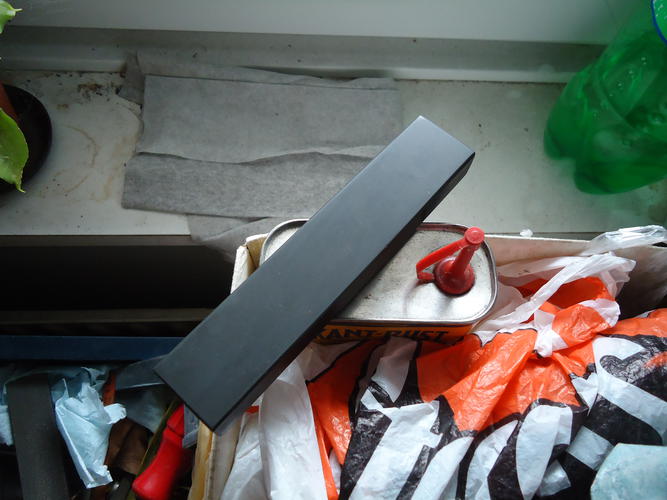
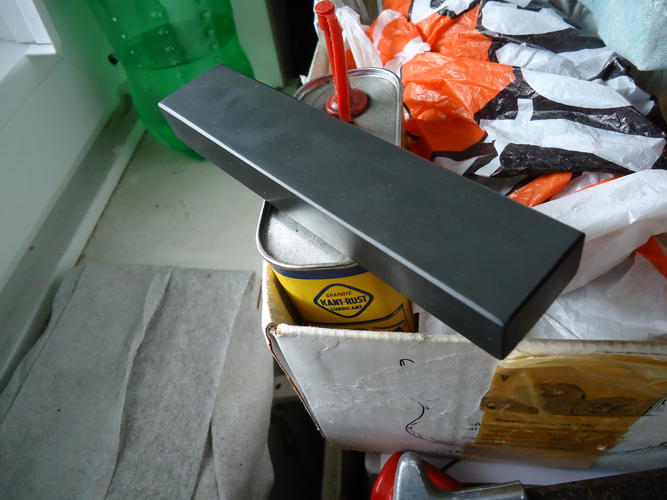
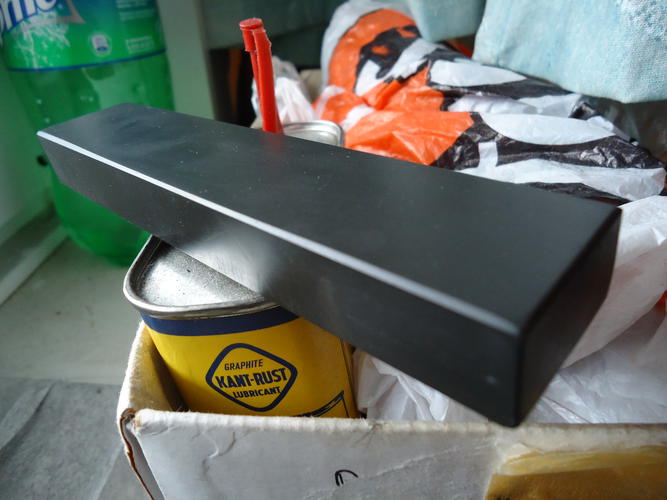
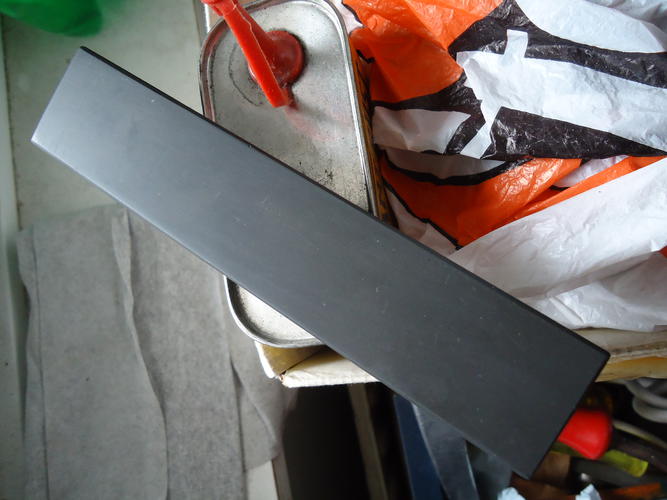
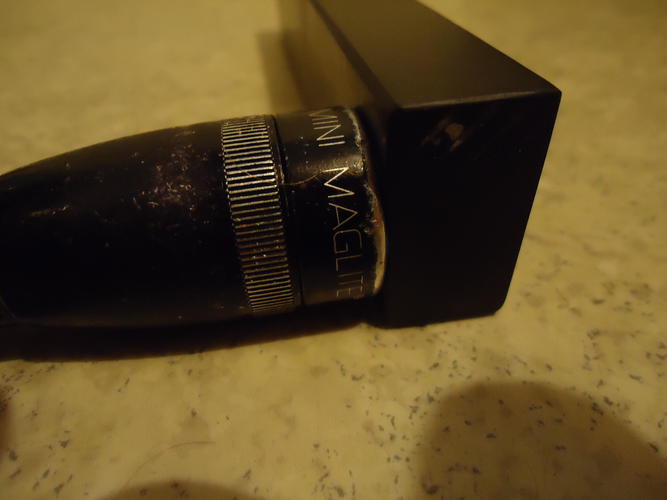
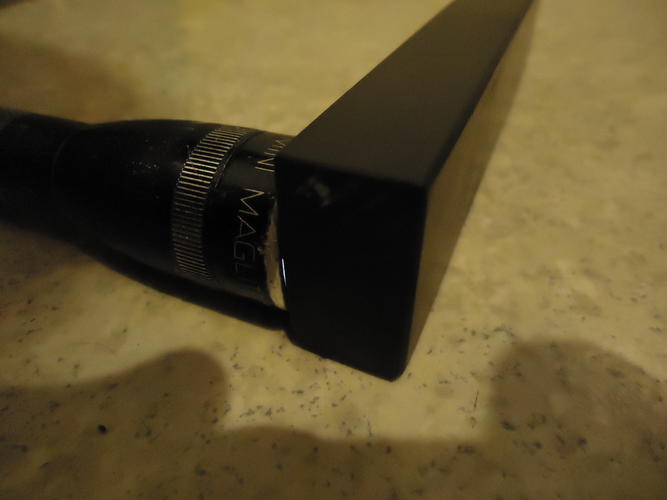
-
11-26-2016, 12:29 PM #25
-
11-26-2016, 01:19 PM #26

Would you like to wash the stone with some soap, or leave it overnight in water with some mild soap to remove that oily appearance? Dipping it in pure diethyl ether will work even better but it's not cost effective, and I think it's a regulated "substance" there too.
As for sandpaper (wet and dry variety, blue backing, black particles), you can buy it from everywhere and it's dead cheap, get a couple of 200 grit and another couple of 1000 grit sheets, that's less than 15 kr.
Lap the stone dry, wash thoroughly, and get some photos again. If the word "razor" appears anywhere on the stone, be careful not to lap that place, or not. If it's on a label and not on the stone, lap all sides. I also don't see any cutting marks, do the sides of the stone look really smooth or it's just me?
Anyway, start by washing the stone with soap until it looks kind of dry from all that oil.
-
11-26-2016, 01:35 PM #27

Oven cleaner, auto brake cleaner work well for cleaning oil off a stone as well.
Be careful how you treat people on your way up, you may meet them again on your way back down.
-
11-26-2016, 07:22 PM #28The First Cut is the Deepest!


- Join Date
- Feb 2010
- Location
- Upper Middle Slobovia NY
- Posts
- 2,737
Thanked: 481
The purpose of the thread is to identify the stone and density is a tool in the box of knowledge to help with that. I had no clue slate had that density. The more I read the more I am convinced it is not an arky but one of the slates instead. And the only one I know of that had sticker labels that specified razors were thuries and Special Stones.
-
11-26-2016, 07:58 PM #29

You could classify TOS as slates as well, and many UK slates, more than five had a label about razor, let alone the "razor sharp edge". If we include that last phrase, every stone that can shave arm hair belongs to the category, and most quality stones from the whole Europe and Americas were sold by some company at some point the last 200 years, and had a label.
If it's a Thuringian, it would be a pity to see so much oil on it, but I don't think it's one. As for the lune stone, it's even less likely to be one.
In the end, the stone shaves or doesn't, that's what matters the most.
-
11-26-2016, 09:32 PM #30

Now I'm curious about the spotting on the end and side of the stones in some of the pictures. Does it appear green or turquoise colored by chance?
The further pictures make me think it might be a vintage Yellow Lake, or maybe the Cumbrian stone I mentioned before. Welsh slates can have green-turquoise spotting like that, and Yellow Lakes can get that dark when oiled.Last edited by Brontosaurus; 11-27-2016 at 01:30 AM.
Striving to be brief, I become obscure. --Horace


 17Likes
17Likes LinkBack URL
LinkBack URL About LinkBacks
About LinkBacks






 Reply With Quote
Reply With Quote


